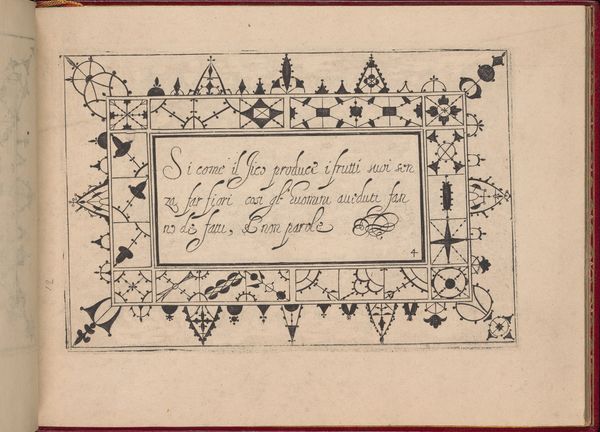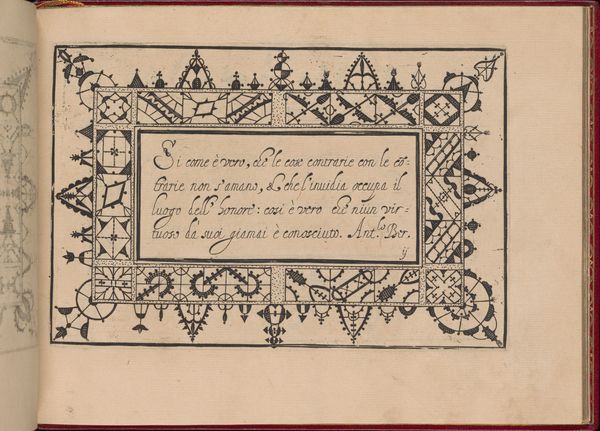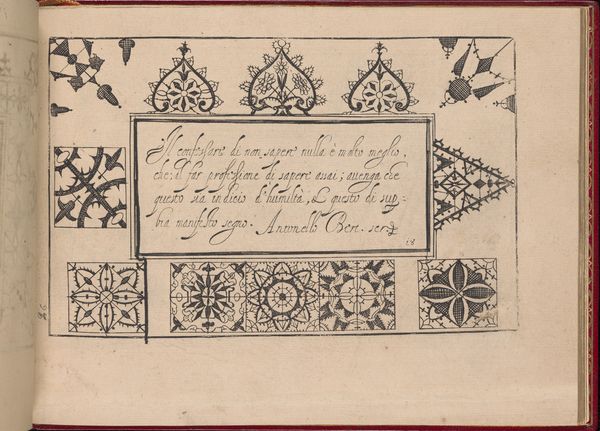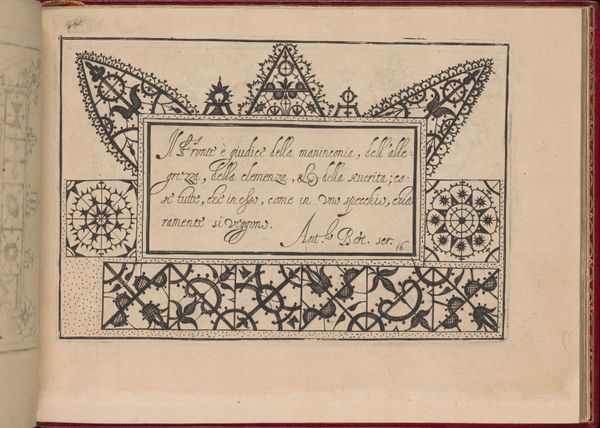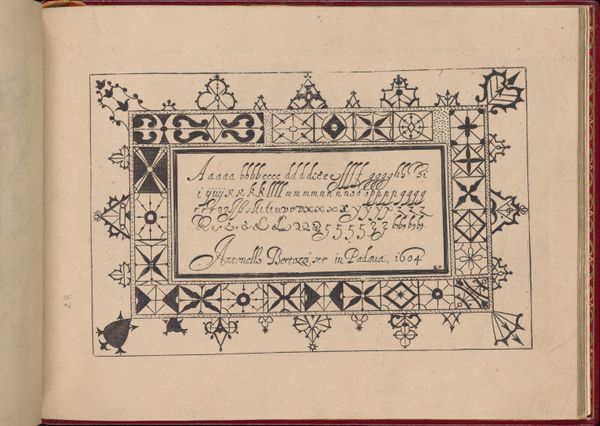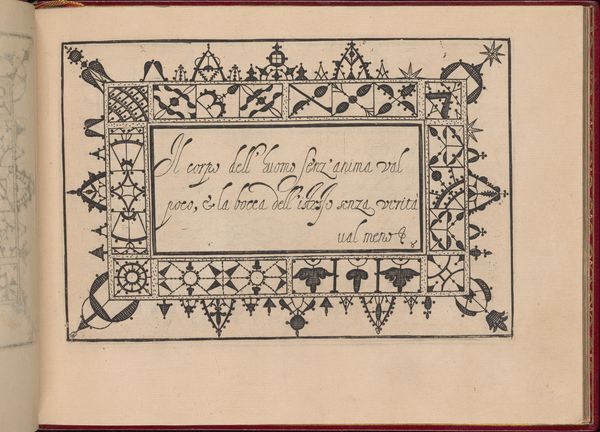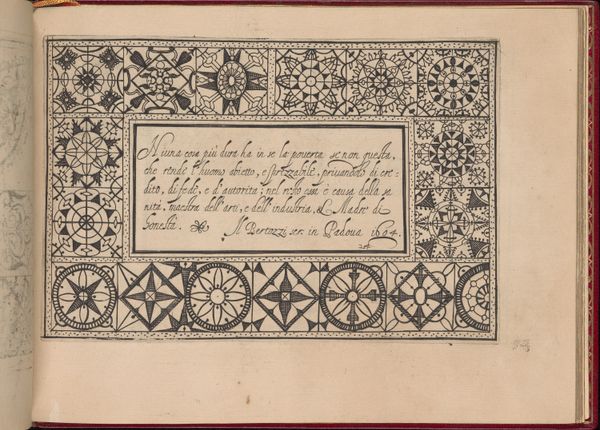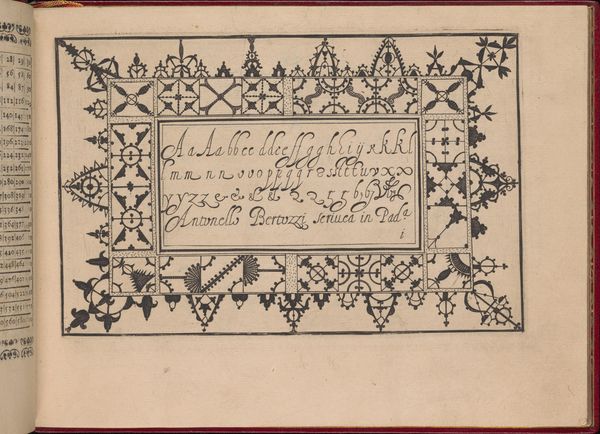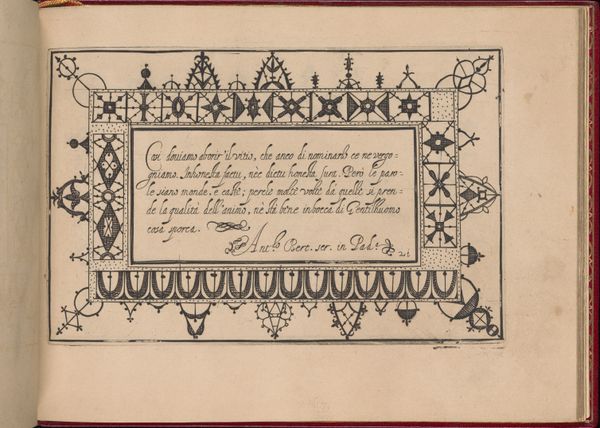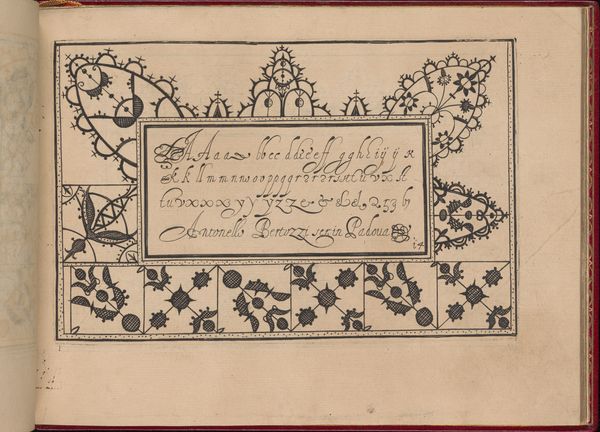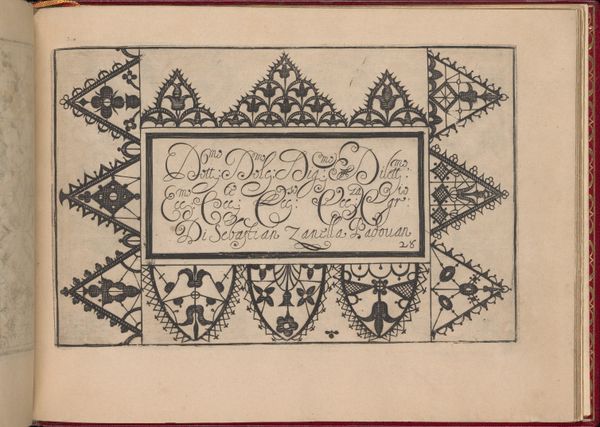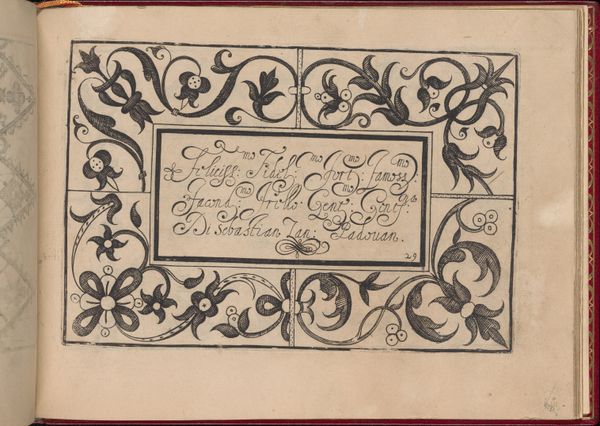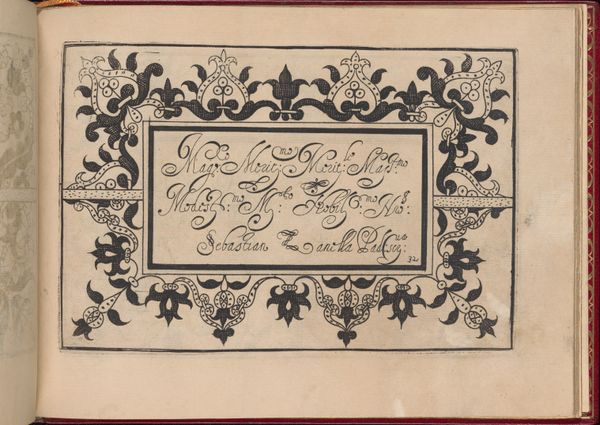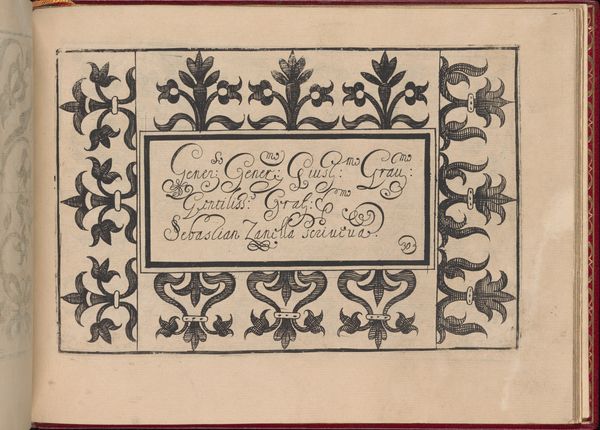
Ghirlanda: Di sei vaghi fiori scielti da piu famosi Giardini d'Italia, page 27 (recto) 1604
0:00
0:00
drawing, graphic-art, print, paper, ink
#
drawing
#
graphic-art
# print
#
book
#
paper
#
11_renaissance
#
ink
#
geometric
#
miniature
Dimensions: Overall: 5 7/8 x 7 7/8 in. (15 x 20 cm)
Copyright: Public Domain
This is page 27 from "Ghirlanda: Di sei vaghi fiori scielti da piu famosi Giardini d'Italia," a book of lace patterns, printed in Italy by Pietro Paulo Tozzi in the early 17th century. This book, like others of its kind, reveals the rise of the printing press as a means of distributing patterns to a wider audience. Books of lace patterns arose in response to the increasing demand for domestic and professional lacemaking. Lace became a symbol of status and refinement and was used to adorn clothing, linens, and religious objects. This page, with its geometric and floral motifs, shows the kinds of designs that lacemakers would have used as inspiration. These books were not just about aesthetics. They were tools for economic empowerment, particularly for women, offering a means of income through skilled craftsmanship. By studying these patterns, we can see how art intersected with commerce, gender roles, and the decorative arts. To fully appreciate this work, researchers might explore inventories and account books detailing the trade and consumption of lace, or manuals that describe the techniques of lacemaking. This book and others like it offer a fascinating glimpse into the social history of art and design.
Comments
No comments
Be the first to comment and join the conversation on the ultimate creative platform.
